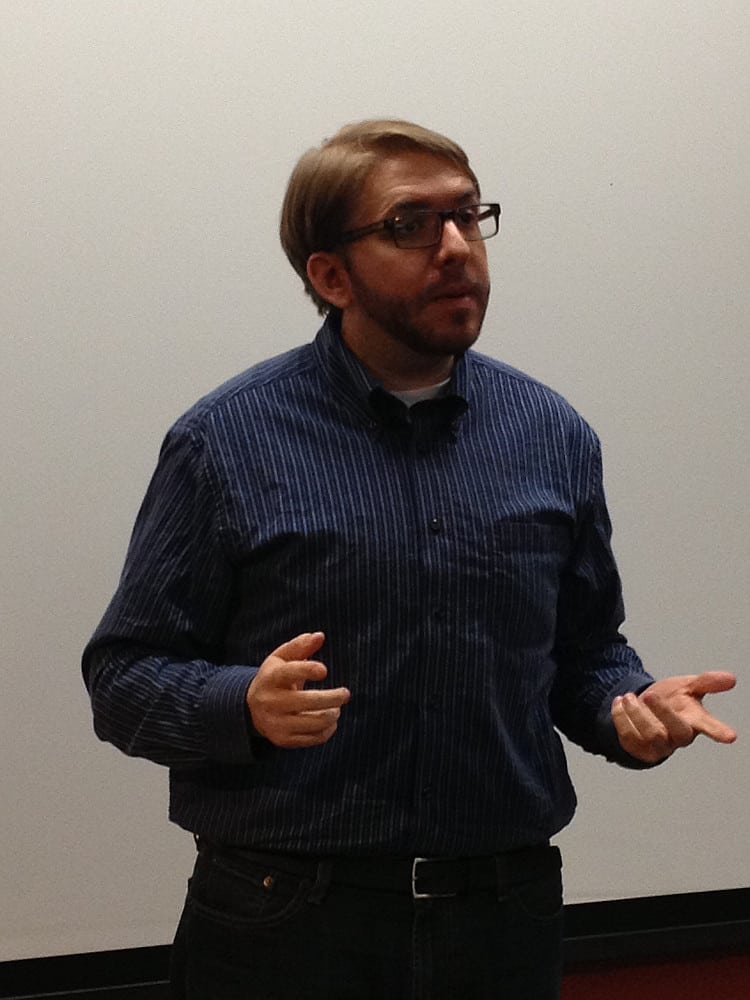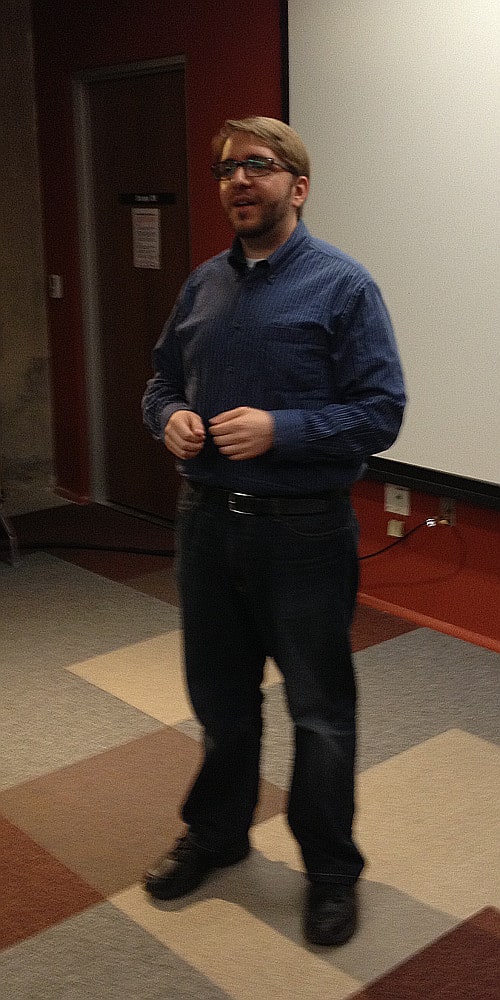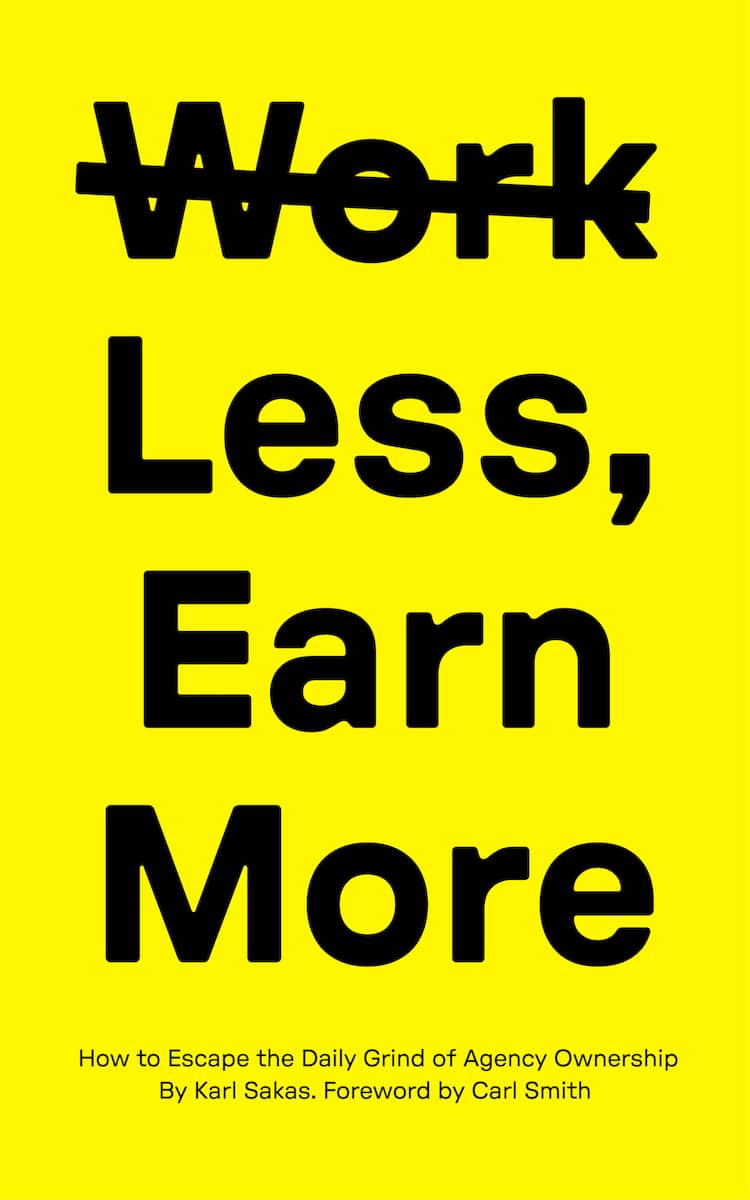
Karl Sakas speaking on time management for marketing agency owners
Are you running in a million directions, getting interrupted all day with employees who need answers, and wondering how to find more free time while running your marketing agency?
It doesn’t have to be that way. I recently shared the solution as I led a lunch seminar for agency owners and executives at the American Tobacco Campus in Durham, NC, for the Triangle Interactive Marketing Association (TIMA), a marketing trade association in the Raleigh area.
Three easy ways to find more free time while running your creative agency
From my experience as a business consultant to creative agency owners, I’ve identified three “low hanging fruit” ways to create more free time for the founder, CEO, or COO:
- Delegate effectively
- Set (and uphold) priorities
- Say “yes” on your own terms, including saying “no” without burning bridges
You’ve got a team. Put them to work. Here’s how.
Solution #1: Delegate effectively
Here are the basics to smarter delegation:
 Give your team boundaries. The ideal is to let your team handle as much as possible, but I realize you still want to review or make decisions on certain things. That’s fine. But to help them move faster, let them know which is which. Specifically, let them know the topics or areas where you expect them to ask you before they take action. And for the rest, give them guidelines about what you want, and then let them know you trust them to make their own decisions. That doesn’t mean you won’t ask them to make different choices in the future, but you’ll need to agree to not second-guess their decisions.
Give your team boundaries. The ideal is to let your team handle as much as possible, but I realize you still want to review or make decisions on certain things. That’s fine. But to help them move faster, let them know which is which. Specifically, let them know the topics or areas where you expect them to ask you before they take action. And for the rest, give them guidelines about what you want, and then let them know you trust them to make their own decisions. That doesn’t mean you won’t ask them to make different choices in the future, but you’ll need to agree to not second-guess their decisions.- Create documentation for common procedures. Give your team documentation (on anything that must be done a certain way). Have them create updated documentation. Make sure it’s stored somewhere where anyone can access it, just in case.
- Tell the team your priorities. More on that in #2.
Remember, focus on telling them the result you want (the “what”), not telling them the way you want them to do it (the “how”). They can probably find a better way to get there. Here’s more on delegation.
Solution #2: Set (and uphold) priorities)
If your people don’t know where to focus, I bet you $20 they aren’t going to be doing your top priorities first. Your team can’t read your mind—you have to tell them what you want.
 What if you have trouble picking what you want them to do first? When I did project management at small marketing agencies, I asked a particular client which project he wanted us to focus on completing first. He said, “Karl, I hate when you make me choose.”
What if you have trouble picking what you want them to do first? When I did project management at small marketing agencies, I asked a particular client which project he wanted us to focus on completing first. He said, “Karl, I hate when you make me choose.”
Yes, we all want everything at once. But multi-tasking is a myth. You’ll get better results from your team if they finish one thing before moving on to another. You’ve probably seen that yourself at work—you have your to-do list but as you jump around, you find yourself at the end of the day and you haven’t actually finished anything.
When it comes to upholding priorities, the biggest thing is keeping track of your list… and then saying “no” (without burning bridges) when people try to add new things that are more urgent than you want. For the answer on how to do this, read on for the next solution.
Solution #3: Say “yes” on your own terms, including saying “no” without burning bridges
No one likes hearing “no,” which is why everyone likes say “yes” and dreads saying “no.” Think about how your agency’s clients react when you say “yes” vs. “no.” Yes = happy, no = unhappy.
Yet if you don’t say “no,” your to-do list will grow too big to keep up, and you’ll start letting people down. That’s not a good outcome, especially when your agency depends on providing good service to clients.
The key is saying “yes” on your own terms, which sometimes includes saying “no” without burning bridges. How do you do that?
The key is to couch things as a conditional “yes”—the answer is “yes” if they do what you need (sign a contract, pay a rush-rate premium, or pay for a scope change). Here are three examples of ways to say “yes” on your own terms.
- Scope changes: “We’re glad to add that feature—would you like an estimate on the additional work?”
- Demand for excessively fast turnaround: “We’re glad to do it. Because we’ve already scheduled work for our other clients, we’d need to charge a rush-rate premium of X%. Would the original ETA work, or would you like to do the priority rate?”
- Prospective client wants an exact ETA before signing a contract: “As we mentioned, our estimate is that the project will take 10-12 weeks to complete, once it’s scheduled. We’re glad to share a more precise projected ETA once we review at our Traffic meeting, but we can’t put it on the Traffic agenda ’til we’ve received the deposit.”
It can feel awkward at first—but if you aren’t willing to push back, you’re wasting time, losing money, and getting stressed out when you don’t have to be stressed out.
Want more on saying “no” without burning bridges? Read my followup article on just that topic.
Your Action-Item: Pick 1 thing today to delegate off your to-do list
Now what? Pick one thing to delegate today, something that takes up a ton of your time but that you don’t really need to do yourself.
 Document the result you need.
Document the result you need.- Choose the employee you’ll delegate to.
- Give them the decision-making boundaries you want them to follow.
- Be willing to answer their questions now and in the future. Remember, they can’t read your mind.
- Schedule a meeting with them to check in in a week to see how it’s going, and to review their documentation.
- Schedule a to-do for yourself for a month from now to see if delegation is working.
- Take a deep breath. You just made your life easier. It’s going to be fine.
Having trouble deciding what you should delegate first? Give me a call and I can help you figure it out how to save time through delegation, through my consulting and coaching services.
Question: What did you choose to delegate? If you don’t delegate much yet, what would you delegate first?


